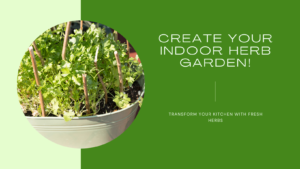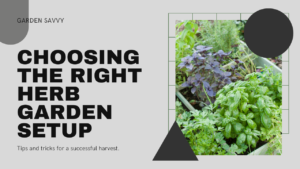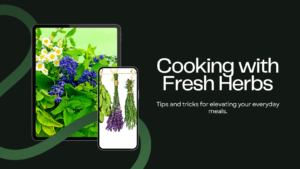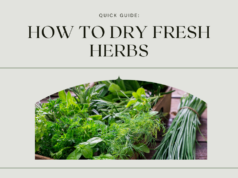
Welcome to our guide on creating the perfect indoor herb garden for your kitchen. If you love cooking and want to elevate your dishes with fresh, flavorful herbs, an indoor herb garden is a must-have. Whether you have limited outdoor space or simply want the convenience of having herbs at arm’s reach, an indoor garden allows you to enjoy the benefits of fresh herbs year-round.
Imagine stepping into your kitchen, reaching out, and plucking a handful of aromatic basil leaves right off the plant. Picture sprinkling vibrant cilantro over your homemade tacos or adding freshly chopped rosemary to your roasted potatoes. With an indoor herb garden, these delightful flavors will always be within your grasp.
Key Takeaways:
- Indoor herb gardens are perfect for cooking enthusiasts who want fresh, flavorful herbs year-round.
- Having an indoor herb garden provides the convenience of having herbs at arm’s reach, even with limited outdoor space.
- Imagine the joy of plucking aromatic herbs right from your kitchen garden to enhance your favorite recipes.
- An indoor herb garden allows you to enjoy a variety of flavors and aromas, from basil to cilantro to rosemary.
- Stay tuned as we explore the benefits of having an indoor herb garden, choosing the right setup, popular herbs to grow, maintenance tips, creative cooking techniques, and more!
The Benefits of Having an Indoor Herb Garden
Having an indoor herb garden offers a multitude of benefits for both your culinary adventures and your overall well-being. Let’s explore the advantages that come with growing herbs indoors.
Enhance Your Cooking
When you have an indoor herb garden, you have access to fresh, flavorful herbs all year round. Imagine the convenience of snipping a sprig of basil or rosemary straight from your kitchen countertop and adding it to your favorite dishes. The vibrant flavors and aromas of homegrown herbs can elevate your cooking to new heights.
“Homegrown herbs provide an unparalleled freshness that can transform ordinary meals into extraordinary culinary experiences.”
Whether you’re preparing a simple salad, whipping up a savory sauce, or experimenting with a complex recipe, having a bountiful supply of herbs at your fingertips allows you to easily infuse your dishes with deliciousness and sophistication.
Promote Health and Well-being
Growing herbs indoors not only enhances the taste of your meals but also contributes to your overall health. Herbs are packed with essential nutrients, antioxidants, and medicinal properties that can support a healthy lifestyle.
Studies have shown that adding fresh herbs to your diet can increase your nutrient intake and reduce the need for added salt and unhealthy flavor enhancers. For example, replacing salt with herbs like thyme or oregano can help lower sodium intake while adding a burst of flavor.
Furthermore, certain herbs offer specific health benefits. For instance, mint is known to aid digestion, while lavender can promote relaxation and reduce stress. With an indoor herb garden, you can harness the power of herbs to support your well-being.
To fully understand the health benefits of different herbs and their uses, refer to the table below:
| Herb | Aroma | Flavor Profile | Health Benefits |
|---|---|---|---|
| Basil | Sweet, peppery | Refreshing, slightly spicy | Antioxidant, anti-inflammatory |
| Parsley | Fresh, grassy | Subtle, mildly bitter | Rich in vitamins, supports detoxification |
| Rosemary | Woody, pine-like | Earnthy, citrusy | Enhances memory, improves digestion |
| Mint | Refreshing, cool | Spearmint: sweet, mild; Peppermint: strong and menthol-like | Aids digestion, relieves headache |
With an indoor herb garden, you can effortlessly incorporate these beneficial herbs into your daily life, aiding your well-being one flavor-packed dish at a time.
Choosing the Right Herb Garden Setup

When it comes to creating your indoor herb garden, choosing the right setup is crucial. Factors such as space availability, lighting requirements, and ease of maintenance should all be considered. By making informed decisions, you can ensure the success of your herb garden and enjoy fresh herbs all year round.
Types of Indoor Herb Gardens
There are several types of indoor herb gardens available, each with its own unique benefits. Here are some popular options:
- Window Sill Herb Garden: Perfect for small spaces, window sill herb gardens utilize available sunlight and provide easy access to your herbs while cooking.
- Vertical Herb Garden: Ideal for maximizing space, vertical herb gardens are designed to grow herbs vertically, making them a great choice for kitchen walls or tight corners.
- Hydroponic Herb Garden: Hydroponic systems use water-based solutions instead of soil, allowing for precise control over nutrient delivery and faster growth.
- Indoor Herb Planter: These self-contained planters come with built-in lighting and watering systems, making them a convenient option for beginners or those with limited time.
Consider your space constraints, aesthetic preferences, and gardening experience when selecting the type of herb garden that suits you best.
Considerations for Choosing the Right Setup
When choosing the right herb garden setup, there are a few key factors to keep in mind:
- Space: Assess the available space in your kitchen or any other area where you plan to set up your indoor herb garden. Determine whether you have enough room for the chosen type of herb garden and if it can accommodate the desired number of herbs.
- Lighting: Herbs typically require 6-8 hours of sunlight per day. If your chosen location lacks natural light, consider supplemental lighting options such as LED grow lights, which provide the necessary intensity and spectrum for healthy herb growth.
- Maintenance: Evaluate the level of maintenance required by the chosen herb garden setup. Some systems may require frequent watering or nutrient monitoring, while others offer automated features for convenience.
By considering these aspects, you can select a herb garden setup that aligns with your space, lighting, and maintenance preferences.
Comparison of Indoor Herb Garden Setups
| Herb Garden Setup | Space Requirement | Lighting Requirement | Maintenance Level |
|---|---|---|---|
| Window Sill Herb Garden | Small, fits in a window sill | Requires ample sunlight | Low maintenance, regular watering |
| Vertical Herb Garden | Utilizes vertical space, suitable for walls or corners | Requires adequate light for all plants | Moderate maintenance, occasional watering and pruning |
| Hydroponic Herb Garden | Varies depending on system size | LED grow lights or natural light supplemented with artificial lighting | Moderate to high maintenance, regular nutrient monitoring |
| Indoor Herb Planter | Compact, fits on countertops or shelves | Integrated lighting system | Low maintenance, self-watering feature |
Remember, the right herb garden setup will not only complement your space but also make it easier to care for your herbs and enjoy their fresh flavors in your favorite recipes.
Popular Herbs to Grow in Your Indoor Herb Garden

When it comes to indoor herb gardens, choosing the right herbs to grow is key to a successful and flavorful experience in your kitchen. Whether you’re a seasoned chef or just starting to explore the world of culinary delights, having popular herbs readily available at your fingertips can elevate your dishes to new heights.
Here are some of the most popular herbs to consider growing in your indoor herb garden:
- Basil: With its vibrant green leaves and distinct aroma, basil is a versatile herb that adds a fresh and aromatic flavor to a wide range of dishes. From pasta sauces to pesto and salads, basil is a must-have for any herb garden.
- Mint: Known for its refreshing and cooling properties, mint is a must-grow herb that adds a delightful touch to beverages and desserts. From mojitos to mint chocolate chip ice cream, the possibilities are endless with this versatile herb.
- Rosemary: With its pine-like fragrance and robust flavor, rosemary is a favorite herb among chefs. It pairs well with roasted meats, potatoes, and even in bread recipes. This herb is not only delicious but also adds a lovely aroma to your indoor garden.
- Parsley: Parsley is an herb that can’t be overlooked. With its bright green leaves and fresh taste, it serves as a great garnish and flavor enhancer for various dishes. It adds a vibrant touch to salads, soups, and sauces.
- Thyme: Thyme is a versatile herb that can be used fresh or dried. Its earthy aroma and robust flavor make it a staple in many cuisines. It pairs well with meats, vegetables, and even in infusions such as tea.
“A sprinkle of fresh herbs can transform an ordinary dish into an extraordinary culinary masterpiece.” – Unknown
These are just a few examples of the popular herbs that can thrive in your indoor herb garden. Experiment with different herbs based on your taste preferences and culinary preferences. Growing these aromatic herbs will not only enhance the flavors of your dishes but also add a touch of greenery and freshness to your kitchen.
A Quick Guide to Popular Herbs for Your Indoor Herb Garden
| Herb | Aroma | Flavor Profile | Culinary Uses |
|---|---|---|---|
| Basil | Sweet and Floral | Peppery and Clove-like | Pasta sauces, Pesto, Salads |
| Mint | Refreshing and Cool | Minty and Sweet | Beverages, Desserts |
| Rosemary | Pine-like | Earthy and Savory | Roasted meats, Potatoes, Breads |
| Parsley | Fresh and Clean | Mild and Earthy | Garnish, Salads, Soups, Sauces |
| Thyme | Herbaceous and Woody | Earthy and Citrusy | Meats, Vegetables, Infusions |
Now that you have a better understanding of popular herbs for your indoor herb garden, you can start growing your own mini herb paradise in the comfort of your own home. Enjoy the pleasure of plucking fresh herbs and infusing your dishes with their delightful flavors. Happy gardening and happy cooking!
Maintaining Your Indoor Herb Garden
Once you have set up your indoor herb garden, it is important to properly maintain it to ensure the health and thriving growth of your herbs. Taking care of your plants involves regular watering, providing adequate sunlight, and practicing proper pruning techniques. Follow these essential maintenance tasks to keep your indoor herb garden flourishing:
1. Watering
Water is crucial for the growth and vitality of your herbs. However, it is essential to find the right balance, as overwatering can lead to root rot and other issues. Here are some tips:
- Check the moisture level of the soil by inserting your finger about an inch deep. If it feels dry, it’s time to water your herbs.
- Use a watering can or a spray bottle to water your herbs gently, ensuring even distribution of water.
- Avoid waterlogged soil by allowing excess water to drain out from the pot.
2. Providing Adequate Sunlight
Proper sunlight is essential for the healthy growth of your indoor herbs. Most herbs require at least 6-8 hours of sunlight per day. Follow these tips to provide adequate sunlight:
- Place your herb garden near a south-facing window, as it provides the most direct sunlight.
- If you don’t have access to sufficient sunlight, consider using grow lights to supplement the natural light.
- Rotate your herbs every few days to ensure uniform exposure to sunlight and prevent leggy growth.
3. Pruning and Harvesting
Pruning is essential to promote bushier growth and prevent your herbs from becoming leggy. Additionally, regular harvesting ensures the continuous production of fresh herbs. Follow these guidelines:
- Pinch off the top leaves regularly to encourage lateral growth and prevent your herbs from flowering too early.
- Harvest your herbs when they reach a suitable size, making sure not to remove more than one-third of the plant at a time.
- Use sharp scissors or gardening shears to make clean cuts, minimizing damage to the plant.
The key to maintaining a healthy indoor herb garden is consistent care and attention to the unique needs of each herb. By providing them with the right amount of water, sunlight, and regular pruning, you’ll be rewarded with a bountiful supply of fresh herbs for all your culinary creations.
| Common Maintenance Tasks | Frequency |
|---|---|
| Watering | Every 2-3 days or when the soil feels dry |
| Checking sunlight exposure | Daily |
| Pruning | As needed (when herbs become leggy or to encourage bushier growth) |
| Harvesting | As needed (when herbs reach a suitable size) |
Creative Ways to Use Herbs in Your Cooking

Now that you have an abundance of homegrown herbs from your indoor herb garden, let’s explore some creative ways to use them in your cooking. These versatile plants can add depth and flavor to your dishes, taking your culinary creations to the next level.
Infuse Oils and Vinegars with Herbs
One of the simplest and most flavorful ways to use herbs is by infusing oils and vinegars. This technique allows the herbs’ natural oils and aromas to infuse into the liquids, resulting in deliciously fragrant and versatile pantry staples.
Here’s how you can do it:
- Gently wash and dry your herbs, removing any excess moisture.
- Place the herbs in a clean, airtight container.
- Pour either olive oil or vinegar over the herbs, making sure they are fully submerged.
- Seal the container and let it sit in a cool, dark place for at least a week.
- Once the infusion process is complete, strain out the herbs and transfer the flavored oil or vinegar into a clean bottle.
Now you have herb-infused oils and vinegars that can be used to enhance the flavors of salads, marinades, dressings, and more!
Create Herbal Teas and Cocktails
Herbs aren’t just for savory dishes; they also make fantastic additions to both hot and cold beverages. Whether you’re looking to unwind with a soothing herbal tea or elevate your cocktail game, herbs can provide a burst of freshness and complexity.
To make herbal teas:
- Choose your favorite herbs, such as mint, lavender, chamomile, or lemon balm.
- Gently bruise the herbs with your fingers or a mortar and pestle to release their flavors.
- Place the bruised herbs in a teapot or a mug.
- Pour hot water over the herbs and let them steep for a few minutes.
- Strain the herbs and enjoy your fragrant and soothing herbal tea.
For those looking to spice up their cocktails, herbs can be a game-changer. From the classic mojito with fresh mint to a lavender-infused gin and tonic, the possibilities are endless. Don’t be afraid to get creative and experiment with different combinations!
The Versatility of Herbs Knows No Bounds
“Herbs are like fairy dust in the kitchen. They have the power to transform ordinary meals into extraordinary dining experiences.” – [name of famous chef]
The quote above beautifully captures the essence of herbs in cooking. Their versatility knows no bounds, and with a little creativity, you can turn a simple dish into a culinary masterpiece.
Whether you’re using herb-infused oils and vinegars, brewing herbal teas, or crafting herbaceous cocktails, the flavors and aromas of fresh herbs will elevate your cooking to new heights. So go ahead, experiment, and let your taste buds be your guide!
| Herb | Aroma | Flavor Profile | Culinary Uses |
|---|---|---|---|
| Basil | Sweet, peppery | Earthy, slightly spicy | Pesto, tomato-based dishes, salads |
| Rosemary | Piney, woody | Strong, savory | Roasted meats, potatoes, bread |
| Mint | Refreshing, cooling | Crisp, slightly sweet | Mojitos, salads, desserts |
| Parsley | Grassy, fresh | Mild, slightly peppery | Sauces, garnishes, soups |
Comparison of Different Indoor Herb Garden Kits
When it comes to setting up your own indoor herb garden, you have a wide range of options to choose from. Various indoor herb garden kits are available on the market, each offering its unique features and benefits. To help you make an informed decision, let’s compare and contrast some popular kits:
Kit 1: The Herb Grower’s Delight
This kit provides everything you need to start growing your herb garden. It includes a sleek and compact hydroponic system, allowing you to grow herbs without soil. With built-in LED lights and a timer, your herbs will receive the right amount of light and moisture at the perfect intervals. The Herb Grower’s Delight offers simplicity and convenience, making it ideal for beginners.
Kit 2: The Traditionalist’s Choice
If you prefer a more traditional approach, the Traditionalist’s Choice kit might be the perfect fit. It comes with a set of stylish and durable terra cotta pots, along with high-quality organic soil. The kit also includes a plant care guide and a variety of herb seeds, so you can personalize your garden. This kit is perfect for those who enjoy the rustic charm of traditional gardening methods.
Kit 3: The Tech Enthusiast’s Dream
For tech-savvy herb enthusiasts, the Tech Enthusiast’s Dream kit offers a high-tech solution. It features a state-of-the-art smart garden system that utilizes advanced sensors and automated functions. With the help of a mobile app, you can monitor your herbs’ growth progress and adjust the environmental conditions accordingly. This kit is perfect for those who want to combine their love for gardening with cutting-edge technology.
| Kit | Features | Pros | Cons |
|---|---|---|---|
| The Herb Grower’s Delight | Hydroponic system Built-in LED lights and timer Compact design |
– Easy to use and maintain – Suitable for beginners – Space-saving |
– Limited herb variety – Requires electricity – Not customizable |
| The Traditionalist’s Choice | Terra cotta pots Organic soil Plant care guide Variety of herb seeds |
– Natural and eco-friendly – Customizable and personalized – No need for electricity |
– Soil may require frequent watering – Limited control over environmental conditions |
| The Tech Enthusiast’s Dream | Smart garden system Advanced sensors Mobile app integration |
– High-tech and innovative – Monitors and adjusts environmental conditions – Wide variety of herb options |
– Requires electricity and internet access – More expensive – Learning curve for using the app |
Each kit has its advantages and disadvantages, so consider your preferences, gardening experience, and lifestyle before making a decision. Whether you opt for the simplicity of hydroponics, the charm of traditional pots, or the tech-savvy approach, an indoor herb garden kit can be the perfect addition to your kitchen.
Expert Tip:
“Before selecting an indoor herb garden kit, think about the space availability in your kitchen, the amount of time you can dedicate to maintenance, and the herbs you plan to grow. These factors will help you choose the kit that best suits your needs and ensures a successful herb gardening experience.”
FAQ
Q. What are the benefits of having an indoor herb garden?
A. Having an indoor herb garden offers several benefits. It provides convenient access to fresh herbs year-round, enhances the flavor and aroma of your meals, and adds a decorative touch to your kitchen.
Q. How do I choose the right herb garden setup?
A. When selecting a herb garden setup, consider factors such as the available space, lighting requirements, and ease of maintenance. Options include vertical gardens, countertop herb planters, and hanging herb baskets.
Q. Which are the popular herbs to grow in an indoor herb garden?
A. There are many popular herbs suitable for indoor gardens. Basil is a versatile and aromatic herb that pairs well with various cuisines. Mint is refreshing and can be used in both sweet and savory dishes. Other popular choices include parsley, thyme, and rosemary.
Q. How do I maintain my indoor herb garden?
A. Proper watering and sunlight are crucial for maintaining an indoor herb garden. Most herbs require well-drained soil and around 6-8 hours of sunlight per day. Regular pruning and harvesting will help keep the plants healthy and encourage new growth.
Q. What are some creative ways to use herbs in cooking?
A. Herbs can be used in various creative ways in cooking. You can infuse oils and vinegars with herbs to add a burst of flavor to your dishes. Herbal teas and cocktails can be made using fresh herbs for a refreshing twist. Experimenting with different herb combinations can elevate the taste of your culinary creations.
Q. Are there different types of indoor herb garden kits available?
A. Yes, there are various indoor herb garden kits available on the market. These kits range from simple starter kits with basic pots and seeds to more advanced kits that include grow lights, self-watering systems, and integrated apps for monitoring plant growth.
Conclusion
Congratulations! You’ve reached the end of our guide to the perfect indoor herb garden for your kitchen. Throughout this article, we have explored the numerous benefits of having an indoor herb garden, from enhancing the flavors of your dishes to providing a fresh and aromatic atmosphere in your home.
We have discussed the importance of choosing the right herb garden setup based on your space, lighting, and maintenance preferences. Remember, whether you opt for a small countertop herb garden or a larger vertical system, the key is to create an environment that promotes healthy growth and easy access to your favorite herbs.
Additionally, we have highlighted some of the most popular herbs to grow in your indoor garden. From versatile basil and refreshing mint to fragrant rosemary and soothing lavender, these herbs can elevate your culinary creations and add a touch of luxury to everyday meals.
To ensure your indoor herb garden thrives, we have provided maintenance tips such as proper watering, sunlight requirements, and pruning techniques. By following these guidelines, you can enjoy a bountiful harvest of fresh herbs year-round.
Finally, we have explored creative ways to incorporate your homegrown herbs into your cooking. Infusing oils and vinegars, making herbal teas and cocktails, and experimenting with herb-infused butter are just a few examples of how you can unleash the full potential of your indoor herb garden.
We hope this article has inspired you to start your own indoor herb garden. With a little effort and care, you can enjoy the convenience and freshness of homegrown herbs right at your fingertips. Happy gardening and happy cooking!
















